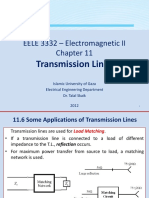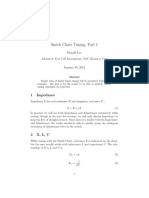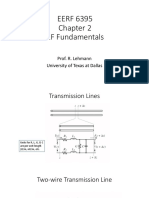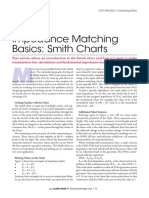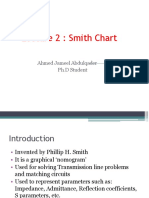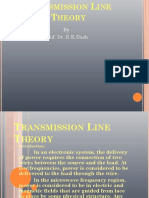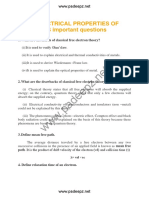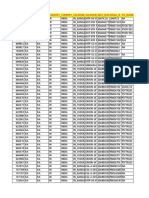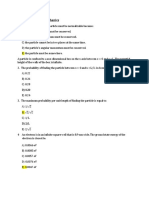0% found this document useful (0 votes)
51 views55 pagesModule - 2 - Network Parameters & Smith Chart
The document discusses network parameters and the Smith chart, focusing on two-port network representations, including Z, Y, and ABCD parameters. It covers the properties of these parameters, the significance of S-parameters, and the use of signal flow graphs. Additionally, it explains the Smith chart's role in impedance matching and provides examples of load matching techniques using various components.
Uploaded by
ARUN KUMAR 22116016Copyright
© © All Rights Reserved
We take content rights seriously. If you suspect this is your content, claim it here.
Available Formats
Download as PDF, TXT or read online on Scribd
0% found this document useful (0 votes)
51 views55 pagesModule - 2 - Network Parameters & Smith Chart
The document discusses network parameters and the Smith chart, focusing on two-port network representations, including Z, Y, and ABCD parameters. It covers the properties of these parameters, the significance of S-parameters, and the use of signal flow graphs. Additionally, it explains the Smith chart's role in impedance matching and provides examples of load matching techniques using various components.
Uploaded by
ARUN KUMAR 22116016Copyright
© © All Rights Reserved
We take content rights seriously. If you suspect this is your content, claim it here.
Available Formats
Download as PDF, TXT or read online on Scribd
/ 55












